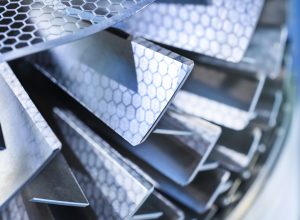Airlines are starting to turn their attention from liquidity to a steady uptick in air travel demand. While overall daily airline passenger traffic remains down more than 60 percent from the fourth quarter of last year according to Airlines of America, domestic leisure volumes have already recovered to nearly 90 percent of 2019 levels, according to securities analysts who track commercial aviation. At issue is how carriers ensure they’ll have a steady and reliable source of components and tooling to keep aircraft that haven’t been parked in revenue service, as much possible – as the public gradually regains confidence in air travel. Since the aerospace supply chain is less robust than prior to the global pandemic, the aviation industry is embracing more innovative maintenance, repair and overhaul (MRO) software. Additive manufacturing (AM), also known as 3D printing, is one of them.
Aerospace equipment suppliers with a specialty in AM have demonstrated how they can be of service. In the first half of this year, the Federal Emergency Management Agency (FEMA) called upon them to help produce medical and personal protective equipment, and within just a few days they were delivering finished product, noted Scott Sevcik, vice president for the aerospace segment of Stratasys, a global leader in additive manufacturing software technology.
“An industry that’s often viewed as stodgy and cumbersome really turned on a dime, and they were able to do it because they’ve built up a level of expertise with industrial 3D printing and equipment,” he said.
Fast Radius, a manufacturing technology company, was one of the enterprises who helped meet the government’s urgent call for increased production of medical gear, and found additive manufacturing to be ideal for accelerated production. It’s now seeing demand from aerospace suppliers for a rapid turnaround in the production of components for maintaining aircraft and those needing repair and overhaul. The company has worked with some customers to convert various products made using traditional manufacturing processes to 3D printing, allowing those suppliers to continue to operate their factories in support of MRO service providers. “Additive allows for a much quicker digital alternative to cutting an injection molding tool or setting up a line for stamping or any other traditional manufacturing technology where it just takes a very long time to ramp that up,” Schroeder said.
While AM has demonstrated its ability to adapt quickly to the current environment, it remains to be seen how many component and tooling suppliers will actually fast-track the process, according to Paula Hay, vice president for additive manufacturing engineering and technology at Collins Aerospace. “Because there’s so much uncertainty and slowdown in aviation right now, it’s unclear whether organizations will invest the resources to advance AM or reserve them for running daily operations,” she said. “If we do see an uptick in new adoptions, it will most likely be first in tools and then spread more to parts.”

To repair damaged aircraft parts and build large-scale parts and tooling, Collins is concentrating much of its AM technology development on directed-energy deposition (DED), a 3D printing process. DED involves combining a metal wire or a powder with an energy source to deposit material onto a build tray or an existing part directly. Parts chosen for DED are typically large without the need for tight tolerances. DED methods are capable of building very large parts, and are popular because of the rapid deposition speed. Because it closely resembles welding, DED is commonly used to repair and maintain existing parts and rapid prototyping.
In recent projects with the U.S. Air Force, Stratasys has employed innovations such as colored materials and printed textures to reduce post-processing and allowing parts to go straight from the 3D printer to the aircraft. AM color technology also enables printing of elements such as logos, serial numbers and various coding directly onto tools and parts, enabling full traceability across the entire product lifecycle.
Some aerospace suppliers are discovering that various AM innovations taken from other industries, such as automotive and consumer goods, may have applications to MRO service providers, noted Schroeder. For example, Fast Radius has created 3D-printed electrical connector parts for automotive uses and is now working with a large aerospace original equipment manufacturer that makes electrical components for aircraft.
Stratasys’ Sevcik believes the aerospace companies who came through for FEMA proved a point that should resonate with more aviation suppliers. “[AM] technology can be effectively used within aerospace to effect rapid change, which is exactly what you need when you’re looking at the challenges that an MRO environment experiences.”
Editor: Visit our website to learn more about transformations underway in the aerospace supply chain